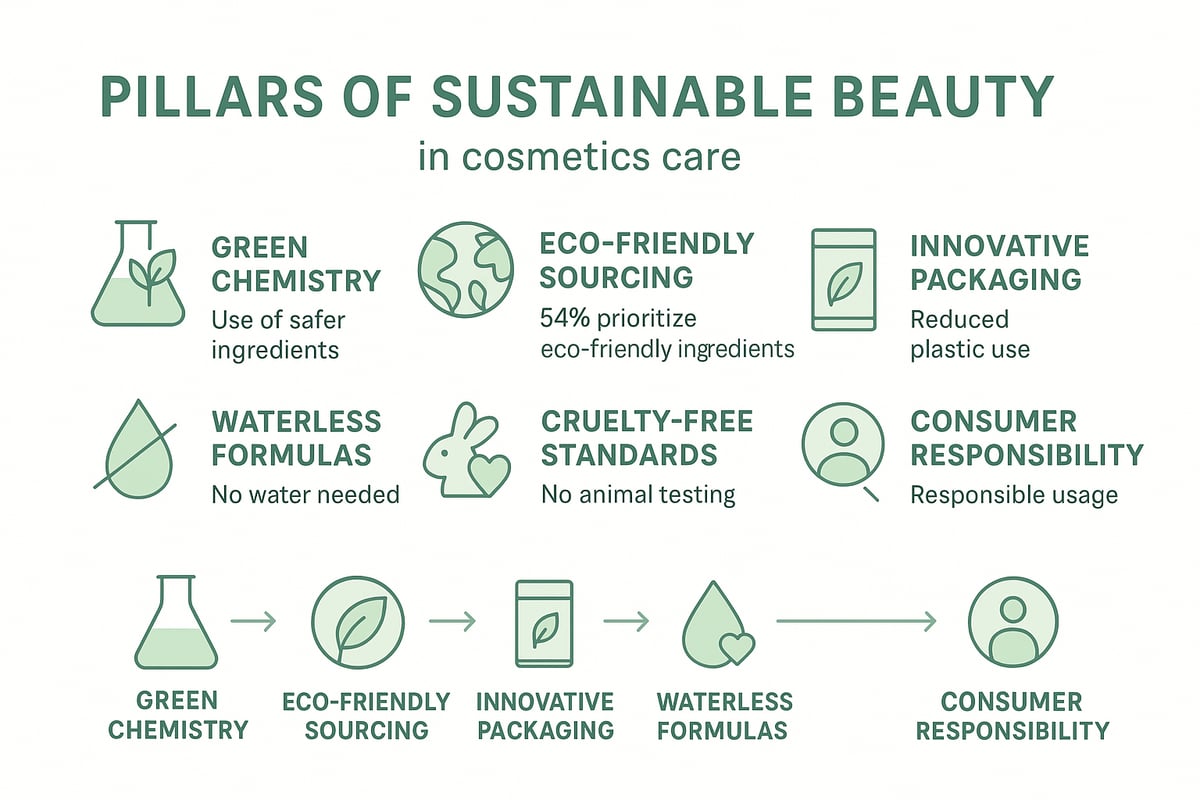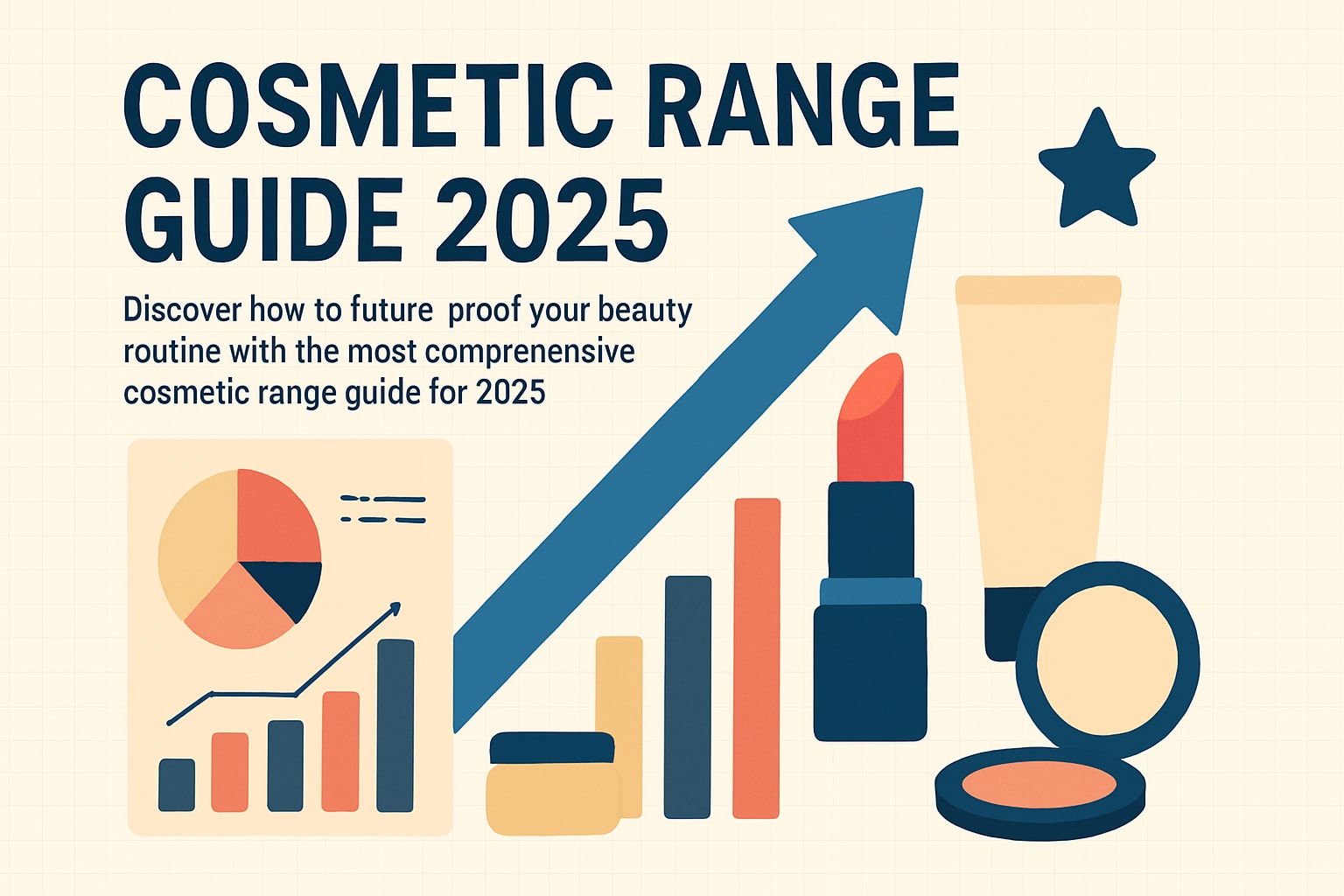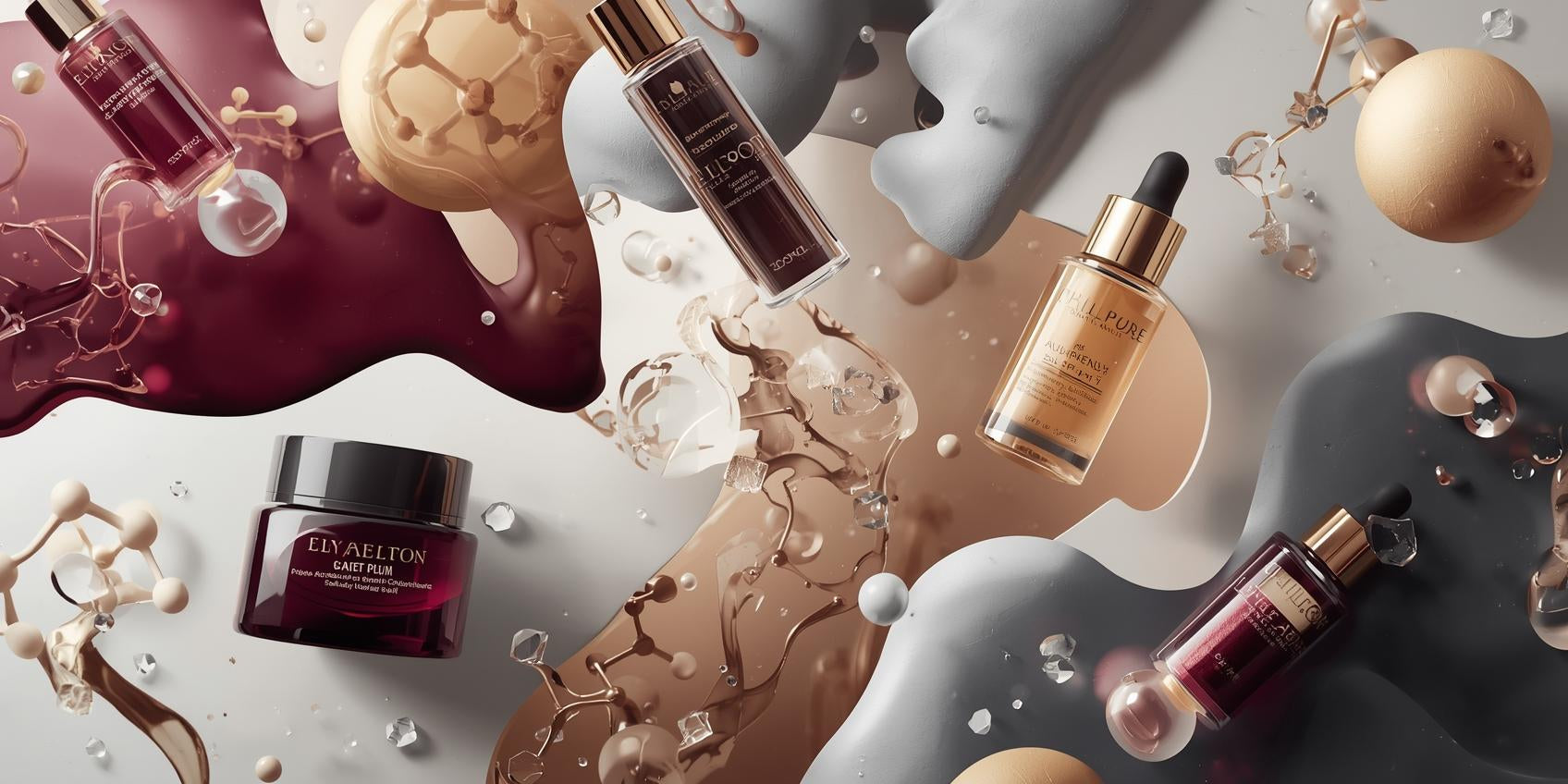Discover how to transform your beauty regimen and make smarter decisions in the ever-changing world of cosmetics care. This guide is designed to offer you expert insights and practical strategies so you can navigate new trends with confidence.
You will explore the essentials of daily routines, ingredient breakthroughs, sustainable solutions, tech-driven enhancements, and the latest in personalized cosmetics care. Learn how to build a routine that supports healthy, glowing skin while staying ahead of what is next in beauty.
Expect actionable advice, future-focused trends, and expert-backed tips to help elevate your approach to cosmetics care in 2025.
The Foundations of Effective Cosmetics Care
Building a solid foundation in cosmetics care is essential for achieving visible, lasting results. Understanding your skin, creating consistent routines, and making informed choices about ingredients and hygiene will set you up for long-term success. Let’s break down the core pillars that shape effective cosmetics care in 2025.

Understanding Skin Types and Needs
Knowing your skin type is the first step toward effective cosmetics care. Each skin type—oily, dry, combination, sensitive, or normal—has unique requirements that influence product choices and daily habits.
Misidentifying your skin’s needs can lead to irritation, breakouts, or ineffective results. For example, sensitive skin benefits from gentle, fragrance-free routines, while oily skin may require lightweight, non-comedogenic products.
Did you know that 65% of consumers use products unsuited for their skin type (Allure, 2023)? This highlights the importance of accurate self-assessment before building a cosmetics care routine.
Daily and Weekly Care Routines
A results-driven cosmetics care routine starts with consistency. Every day, cleanse your skin to remove impurities, then follow with moisturizer and sun protection. Exfoliate one to two times a week, depending on skin sensitivity, to avoid over-exfoliation and potential barrier damage.
Experts recommend double cleansing for makeup wearers, starting with an oil-based cleanser followed by a water-based one. Morning routines focus on protection and hydration, while evening routines prioritize repair and nourishment.
Proper order and frequency of product application are key to unlocking the full benefits of your cosmetics care regimen.
Ingredient Safety and Label Literacy
Reading ingredient lists is crucial for safe cosmetics care. Look for INCI names (International Nomenclature of Cosmetic Ingredients) to identify what’s in your products. Watch for potential allergens or irritants, and always patch test new items.
Regulations are evolving for 2025, with some ingredients being banned and labels requiring clearer disclosures. It's essential to stay informed to avoid adverse reactions—42% of users report issues due to misunderstood ingredients (Dermatology Times, 2024).
To better understand how to interpret complex ingredient labels, visit Understanding INCI and Ingredients for a helpful guide.
Shelf Life, Storage, and Product Hygiene
Maintaining proper product hygiene is a critical part of cosmetics care. Always check expiration dates and PAO (Period After Opening) symbols to ensure your products remain effective and safe.
Store cosmetics away from sunlight and humidity to preserve active ingredients, especially in sensitive formulas like vitamin C serums. Clean applicators regularly and avoid touching product openings directly to prevent contamination.
Improper storage or poor hygiene can compromise your cosmetics care results and even harm your skin.
Professional Guidance and Resources
Sometimes, expert advice is needed to optimize your cosmetics care journey. Consult dermatologists or licensed estheticians for persistent concerns or before starting new treatments.
Professional treatments can complement home routines and address specific issues. Reliable online resources and ingredient analysis tools can help you stay updated on safety and best practices.
Investing in professional support empowers you to make informed decisions and adapt your cosmetics care routine as your skin’s needs evolve.
Breakthrough Ingredients & Formulation Trends for 2025
The cosmetics care industry is rapidly evolving, with ingredient innovation and advanced formulation techniques paving the way for healthier, more effective products. In 2025, consumers can expect a wave of science-backed breakthroughs that are transforming daily routines and raising standards across the beauty sector.
Next-Generation Actives and Botanicals
Biotechnology is revolutionizing cosmetics care, enabling brands to harness lab-grown collagen, advanced peptides, and fermented ingredients with greater efficacy and sustainability. Rare botanicals, such as adaptogens and unique plant extracts, are also gaining traction due to their proven benefits and minimal environmental impact.
Scientific studies support the efficacy of these new actives, especially fermented ingredients known for boosting skin renewal. Biotech-derived components offer consistent quality and are less likely to cause irritation. According to Beauty Manufacturing: The Trends That Will Reign And Be Dethroned In 2025, these innovations are reshaping how cosmetics care products are developed and marketed.
Clean Beauty, Transparency, and Safety
Clean beauty remains a core driver in cosmetics care, with consumers demanding non-toxic, transparent formulations. Certifications like ECOCERT and COSMOS are now widely recognized, ensuring products meet rigorous safety and sourcing standards.
Brands are increasingly sharing full ingredient disclosures, including sourcing and supply chain data. This transparency builds trust and allows users to make safer, more informed decisions. For example, some companies now publish third-party test results and traceability reports alongside their cosmetics care products.
Personalization and Adaptive Formulations
Personalization is setting a new benchmark in cosmetics care, with products tailored to individual skin profiles. AI-powered tools analyze user data, recommending ingredients that address specific concerns such as dryness, sensitivity, or pigmentation.
DNA-based skincare and custom-blended solutions are becoming mainstream. A recent Mintel report showed that 38% of consumers seek personalized beauty, highlighting the demand for adaptive formulations. Cosmetics care brands are leveraging this trend to deliver highly targeted results and boost customer satisfaction.
Sustainable and Eco-Friendly Innovations
Sustainability is now integral to cosmetics care, with brands adopting upcycled ingredients and zero-waste formulations. Waterless products, including solid bars and concentrates, help reduce environmental impact by minimizing packaging and water usage.
Refillable packaging is set to dominate in 2025, offering consumers more eco-conscious options. Some innovative brands use biodegradable microbeads instead of plastic, further reducing their environmental footprint and aligning with the values of modern cosmetics care enthusiasts.
Advances in Product Texture and Delivery Systems
Cutting-edge delivery systems are enhancing the performance of cosmetics care products. Encapsulation technology protects sensitive actives, ensuring they remain stable and potent until application. Lightweight gels, hybrid serums, and time-release formulas provide both comfort and prolonged efficacy.
Nanotechnology is also making sunscreens more effective and less noticeable on the skin. These advances in texture and delivery help consumers experience better results from their cosmetics care routines, while improving product usability and appeal.
The INCI Lab: Custom Formulation Expertise
The INCI Lab stands at the forefront of cosmetics care innovation, specializing in award-winning, sustainable custom formulations for brands and entrepreneurs. Their scientific team offers end-to-end support, from ingredient selection to final product development, empowering clients to create high-performance, eco-friendly cosmetics care products that lead the industry in 2025.

With a focus on full ownership, transparency, and sustainability, The INCI Lab ensures every formulation meets future-forward standards. Their expertise helps brands adapt quickly to emerging trends and maintain a competitive edge in the evolving cosmetics care landscape.
Sustainable Beauty: Eco-Conscious Choices for the Modern Consumer
Sustainable beauty is no longer a trend, but a core expectation for anyone serious about cosmetics care. As consumers demand transparency and responsibility, the industry is reshaping itself around eco-friendly practices. From ingredient sourcing to packaging, every step counts in building a cleaner, greener future for cosmetics care.

Green Chemistry and Ingredient Sourcing
Green chemistry is revolutionizing cosmetics care by focusing on safer, renewable, and less polluting processes. Brands now prioritize organic, fair-trade, and wild-harvested ingredients, ensuring ethical sourcing and minimal environmental impact.
For example, many companies are shifting from traditional palm oil to sustainable alternatives, reducing deforestation and habitat loss. According to Nielsen, 54% of beauty shoppers prioritize eco-friendly ingredients—a clear signal that the market is changing.
If you want to dive deeper into the science behind sustainable beauty and how it shapes cosmetics care, explore Sustainable Beauty and Formulation for expert insights and industry updates.
Packaging Revolution: Reducing Waste
Packaging is a major focus for sustainable cosmetics care. Innovations in biodegradable, compostable, and recyclable materials help minimize landfill waste.
Brands are adopting refill stations and closed-loop systems at retail locations, making it easier for consumers to reuse containers and cut down on single-use plastics. Some companies have gone further by eliminating secondary packaging entirely, streamlining the customer experience and reducing their environmental footprint.
These efforts in packaging directly support a more responsible approach to cosmetics care.
Water Conservation and Waterless Formulas
Water conservation is critical in cosmetics care, given the vast amounts used in production. Waterless formulas like solid bars, powders, and concentrates are gaining momentum for their low environmental impact.
For instance, waterless cleansers and serums not only reduce water consumption but also come in smaller, lighter packaging, decreasing emissions during transport. By choosing waterless products, consumers contribute to a more sustainable cosmetics care regimen without sacrificing performance.
Ethical and Cruelty-Free Standards
Modern cosmetics care is defined by ethical choices. The growth of cruelty-free certifications and vegan formulations reflects rising consumer expectations for transparency and animal welfare.
Brands now clearly state their animal testing policies, helping buyers make informed decisions. Many cruelty-free brands are leading the market in 2025, proving that ethical values and innovation can go hand in hand in cosmetics care.
Consumer Responsibility and Greenwashing Awareness
As sustainability claims grow, so does the risk of greenwashing. For smart cosmetics care, consumers must learn to spot misleading eco-claims and verify them using third-party certifications.
Tools and platforms now exist to authenticate sustainability credentials, making it easier to choose truly responsible products. By staying vigilant, consumers ensure their cosmetics care choices support real environmental progress.
Tech-Driven Beauty: The Digital Transformation of Cosmetics Care
The beauty industry is embracing a new era where technology and cosmetics care blend seamlessly. Digital advancements are reshaping routines, product discovery, and personalization, making it easier for consumers to achieve their unique skin goals. Let us explore how innovation is transforming every step of your cosmetics care experience.

Smart Devices and At-Home Beauty Tech
Smart devices are now integral to cosmetics care routines. Skin analyzers, cleansing brushes, and LED therapy tools offer professional-grade results at home. These gadgets use advanced sensors to assess hydration, texture, and oil levels, allowing users to tailor their products with confidence.
- Skin analyzers scan for moisture and elasticity
- LED masks promote collagen and reduce inflammation
- Cleansing devices provide deep pore cleaning
Many devices sync with apps, tracking your skin's progress and suggesting adjustments. This integration of technology offers a level of precision in cosmetics care that was once only available in clinics.
Virtual Try-Ons and Augmented Reality (AR)
Virtual try-ons are revolutionizing how people shop for cosmetics care products. Augmented reality (AR) apps let users visualize makeup shades, skincare results, and even hair color changes in real time. This technology boosts confidence in online purchases and significantly reduces product returns.
- AR apps match foundation to undertones
- Users preview lipstick and eye looks on their own face
- Brands offer live AR consultations
By providing a realistic preview, AR bridges the gap between digital shopping and in-person testing. Cosmetics care brands leveraging AR are seeing higher engagement and satisfaction from their customers.
AI-Driven Personalization and Routine Optimization
Artificial intelligence is powering a new wave of personalized cosmetics care. AI tools analyze selfies or skin scans to recommend tailored products and routines. Virtual assistants and chatbots offer expert advice, making it easy to adapt your regimen as your skin changes.
- AI reviews skin data for targeted product suggestions
- Chatbots answer ingredient and technique questions
- Personalized routines adapt as your needs evolve
For a deeper dive into how AI is shaping personalized beauty, explore AI and Personalized Beauty Solutions. With AI-driven personalization, cosmetics care is no longer a one-size-fits-all journey.
E-Commerce Innovations and Social Commerce
E-commerce platforms are transforming cosmetics care shopping. Shoppable livestreams, influencer-led launches, and integrated social media purchasing are now the norm. Social commerce allows users to discover, test, and buy products directly through their favorite apps.
- Livestreams showcase product demos and tutorials
- Influencers provide trusted reviews in real time
- Seamless checkout within social platforms
According to recent data, 72 percent of Gen Z shoppers find new cosmetics care products through social media. This shift makes the buying process interactive and community-driven.
Data Privacy and Consumer Trust
With the rise of personalized cosmetics care and tech integration, data privacy is a growing concern. Consumers want assurance that their personal skin data is protected and used ethically. Leading brands now prioritize transparency and give users control over their information.
- Clear privacy policies outline data usage
- Opt-in consent for data sharing
- Secure storage of sensitive skin analysis results
Trust is foundational in the digital cosmetics care landscape. By choosing brands that value privacy, consumers can enjoy the benefits of innovation without compromising security.
The Rise of Personalized and Inclusive Cosmetics Care
Personalized and inclusive cosmetics care is transforming the beauty industry. Today, innovation is not just about new formulas but about serving every individual, regardless of skin tone, age, gender, or ability. As consumer expectations shift, brands are rethinking how cosmetics care can be more accessible and responsive to real-world needs.
Expanding Shade Ranges and Texture Diversity
In 2025, cosmetics care is driven by brands expanding their shade ranges and offering diverse textures. Consumers now expect foundations, concealers, and powders to match every undertone and skin type. Many companies have invested in undertone-matching technology, making it easier to find products that truly fit.
A notable trend is foundation lines with 50 or more shades, reflecting the industry's commitment to inclusivity. New textures cater to oily, dry, or combination skin, ensuring everyone benefits from cosmetics care advancements. This expansion is not just a marketing move but a response to long-standing demands for representation and effectiveness.
Gender-Neutral and Age-Inclusive Products
Cosmetics care is also becoming more gender-neutral and age-inclusive. The rise of unisex formulations and ageless marketing campaigns signals a shift toward products that everyone can use, regardless of identity or age. Brands now formulate skincare and makeup to address common concerns like hydration, barrier repair, and radiance across all demographics.
This movement is visible in packaging design, with minimalist, universal containers replacing traditionally gendered aesthetics. Age inclusivity is growing, with targeted products for both younger and mature consumers. For more on these shifts, see 2025 GLOBAL TRENDS: Beauty and Personal Care.
Adaptive Cosmetics for Special Needs
Inclusivity in cosmetics care now extends to adaptive products for people with sensitive skin, allergies, or medical conditions. Brands are developing formulas for those with eczema, vitiligo, or scarring, as well as hypoallergenic and fragrance-free options. Packaging innovations, like braille labeling and easy-open caps, make products accessible to all.
Adaptive cosmetics care has also embraced makeup for special needs, such as color-correcting creams for hyperpigmentation or foundations designed for uneven skin textures. This progress ensures that beauty routines are empowering, not exclusionary, for every consumer.
Consumer-Led Customization
Another major trend in cosmetics care is consumer-led customization. Shoppers can now create their own blends, mix pigments, or use digital tools to design unique products. DIY kits and online platforms allow users to adapt formulations for specific skin concerns, preferences, or occasions.
This movement puts the power in the hands of consumers, letting them shape the future of cosmetics care. Community-driven feedback is influencing product launches and ingredient choices. For a closer look at these innovations, explore 2025 Cosmetics and Pet Trends.
Representation in Marketing and Influencer Culture
Marketing and influencer culture play a crucial role in advancing personalized and inclusive cosmetics care. Brands are now collaborating with ambassadors from a wide array of backgrounds, ensuring campaigns reflect real diversity. This representation fosters trust and loyalty among consumers who want to see themselves in beauty advertising.
According to recent data, 61% of shoppers prefer brands with diverse spokespeople, demonstrating the value of authentic representation in cosmetics care. As influencer partnerships become more inclusive, the industry continues to move toward equitable and personalized beauty for all.
Expert Tips for Building Your 2025 Cosmetics Care Routine
Building an effective cosmetics care routine in 2025 requires more than just following trends. It means understanding your skin, making informed choices, and embracing new innovations. The following expert tips will help you create a routine that is tailored, sustainable, and future ready.
Step 1: Assess and Understand Your Unique Skin Profile
Start your cosmetics care journey by understanding your skin’s unique needs. Use tools like digital skin analyzers or consult a dermatologist for a professional assessment.
Track your skin’s reactions to different products in a journal or with a skincare app. This ongoing observation helps you spot patterns, such as sensitivity to certain ingredients or seasonal changes.
By knowing your skin type and its responses, you set the foundation for a targeted and effective cosmetics care routine.
Step 2: Curate a Minimal, High-Impact Routine
Simplify your cosmetics care by focusing on quality over quantity. Choose products that serve multiple purposes, like a moisturizer with SPF or a tinted serum.
Building a capsule collection not only streamlines your routine but also reduces waste and clutter. Look for essentials that address your primary concerns, and avoid unnecessary steps that can overwhelm your skin.
A minimal approach to cosmetics care supports both skin health and sustainability.
Step 3: Select Ingredients and Formulations That Align with Your Goals
Align your cosmetics care routine with your personal goals by selecting active ingredients that target your specific concerns, like retinol for aging or niacinamide for pigmentation.
When evaluating new products, always check ingredient lists for potential irritants. For a deeper understanding, consult resources such as the Steps to Formulate Safe Cosmetics guide, which outlines how to choose safe and effective formulations.
Layer products thoughtfully for synergy, and avoid doubling up on similar actives.
Step 4: Prioritize Sustainable and Ethical Choices
Modern cosmetics care means considering the impact of your products on the environment. Opt for brands that use refillable packaging, cruelty free formulas, and transparent sourcing.
Switching to solid cleansers or waterless serums can reduce your carbon footprint. Always check for eco-certifications and support companies committed to ethical practices.
This approach ensures your cosmetics care benefits both your skin and the planet.
Step 5: Embrace Technology for Enhanced Results
Incorporate tech tools into your cosmetics care routine for smarter, more precise results. Devices like LED masks, cleansing brushes, and AI powered apps can help track progress and personalize recommendations.
Use augmented reality to test makeup looks virtually before buying. These innovations not only boost results but also make cosmetics care more interactive and data driven.
Stay open to new devices and apps that can elevate your daily regimen.
Step 6: Stay Informed and Adapt to New Trends
The cosmetics care landscape is constantly evolving. Follow reputable dermatologists, scientific journals, and trend reports to keep your knowledge up to date.
Explore resources like the Top 7 Beauty & Cosmetics Trends 2025–26 Shaping the Industry to learn about emerging ingredients, tech, and sustainability practices.
Adapt your routine as new research and products become available, ensuring your cosmetics care remains effective and relevant.
Step 7: Practice Consistency, Patience, and Self-Care
Consistency is key in cosmetics care. Set realistic expectations for visible results, as most changes take time.
Incorporate mindful practices like facial massage to enhance product absorption and relaxation. Remember that self care is as important as the products themselves.
A steady routine will help you achieve and maintain radiant, healthy skin.
Step 8: Monitor, Review, and Adjust Regularly
Regularly reassess your cosmetics care routine to ensure it meets your evolving needs. Track product performance and make seasonal adjustments as necessary.
If persistent issues arise, consult a skincare professional for guidance. Being proactive with monitoring allows you to catch problems early and fine tune your regimen.
Periodic reviews keep your cosmetics care routine efficient and personalized.
After exploring the latest expert insights and future-forward trends in cosmetics care for 2025, you might feel inspired to take your own beauty or product ideas to the next level. Whether you’re an entrepreneur ready to launch a standout brand or you want to transform your skincare routine with innovative, sustainable choices, the journey starts with a single step. I encourage you to put these actionable tips into practice and envision what you could create with the right support. If you’re ready to bring your vision to life, Start Your Product Journey and take the first step toward high-performance, eco-friendly beauty solutions.




